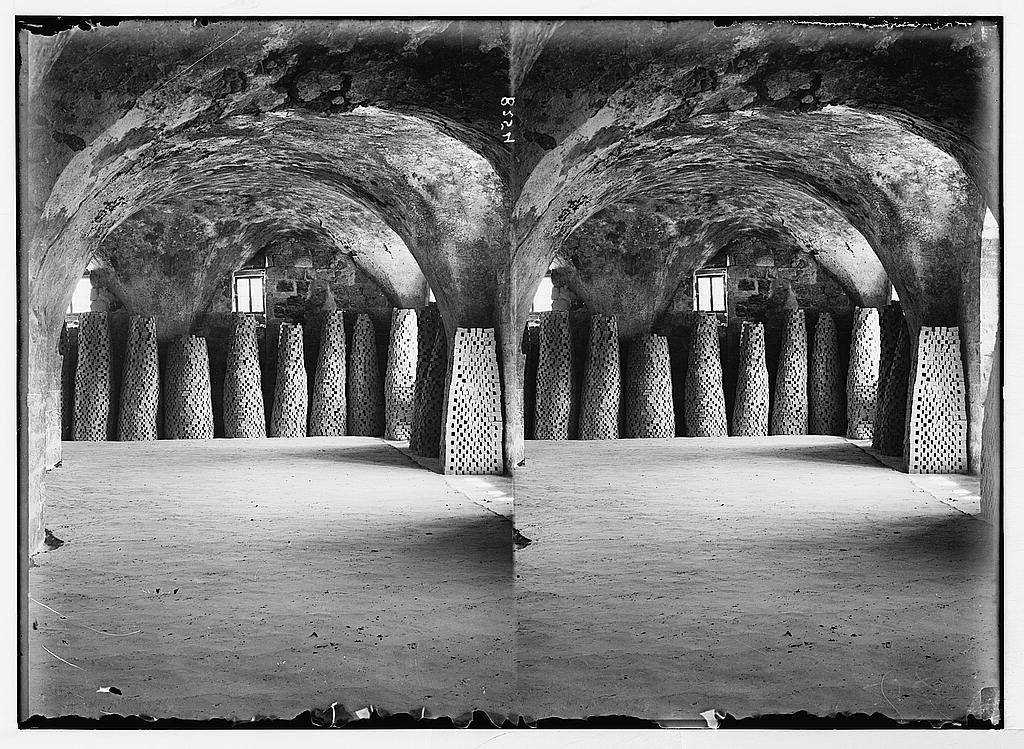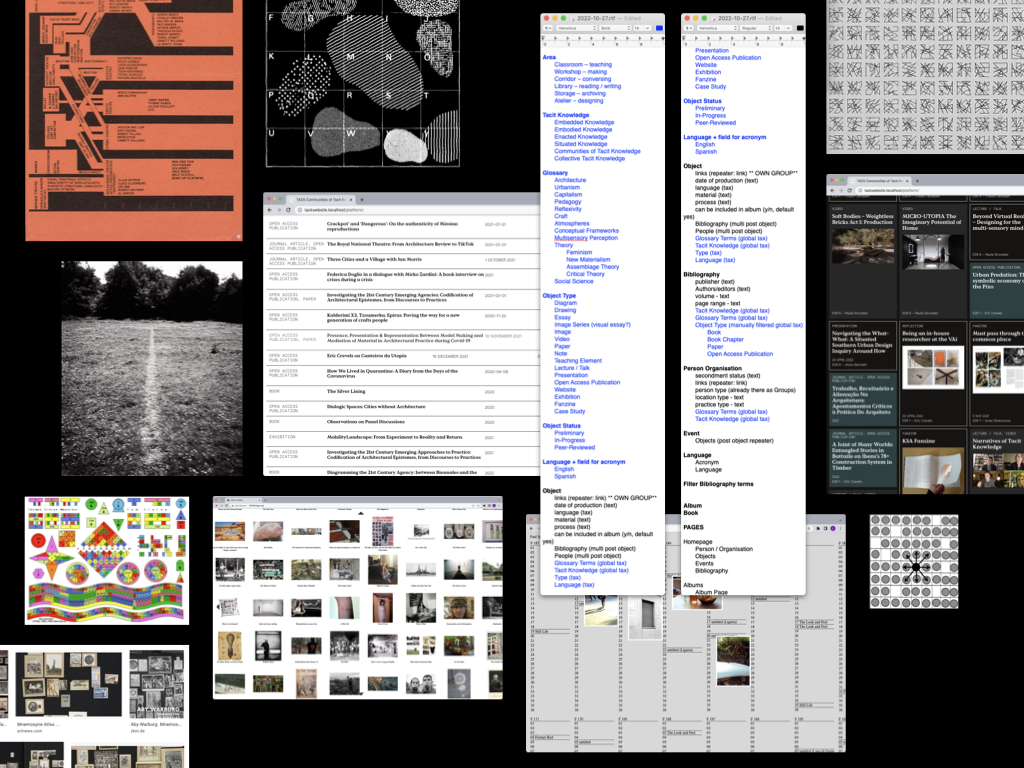Return to archive
title
Tannour
submitted by
Nadi Abusaada Wesam Al Asali

Nablus soap, stacked for drying. Library of Congress, Prints & Photographs Division, [reproduction number, e.g., LC-DIG-matpc-00718]
Its title, Tannour, is derived from the Arabic name for the large conical towers of stacked soap for which the region’s soap industry is famed. These towers serve a crucial purpose in the process of soapmaking: drying the soap by optimising its surface’s exposure to air. This process of optimisation depends heavily on the tacit knowledge of the soap-maker to adjust the tannour’s geometry and form to the vaulted architectural space of the soap factory.
This installation emphasises the reciprocal relationship between the crafted object and the architectural space it inhabits. It pushes the boundaries of the tannour from the realm of adjustment to its architectural setting into an architectural creation in its own right. The soap tower no longer merely inhabits: it becomes inhabitable.
- Tannour Study (2023), Nadi Abusaada, Wesam Al Asali (IWlab)
- Tannour Study (2023), Nadi Abusaada, Wesam Al Asali (IWlab)
- Tannour Study (2023), Nadi Abusaada, Wesam Al Asali (IWlab)
- Tannour Study (2023), Nadi Abusaada, Wesam Al Asali (IWlab)
- @ TACK Exhibition
- @ TACK Exhibition
- @ TACK Exhibition
- @ TACK Exhibition
Submitted by
Nadi Abusaada is an architect and historian. He is currently a Postdoctoral Fellow at the Institute for the History and Theory of Architecture (gta) at ETH Zürich.
Wesam Al Asali is an Assistant Professor at IE University in Spain and the co-founder of IWlab and CERCAA.
- Dovecotes, Delta, Egypt 2021. Photographer: Wesam Al Asali (IWlab)
- Mud Oven, As-Safira, Syria 2021. Photographer: Ahmad Salah (IWlab)
- Soap Tower, Aleppo, Syria 2022. Photographer: Iyas Shahin (IWlab)
This object is part of the TACK Exhibition “Unausgesprochenes Wissen / Unspoken Knowledge / Le (savoir) non-dit”, in the section “Making and Materiality”.















